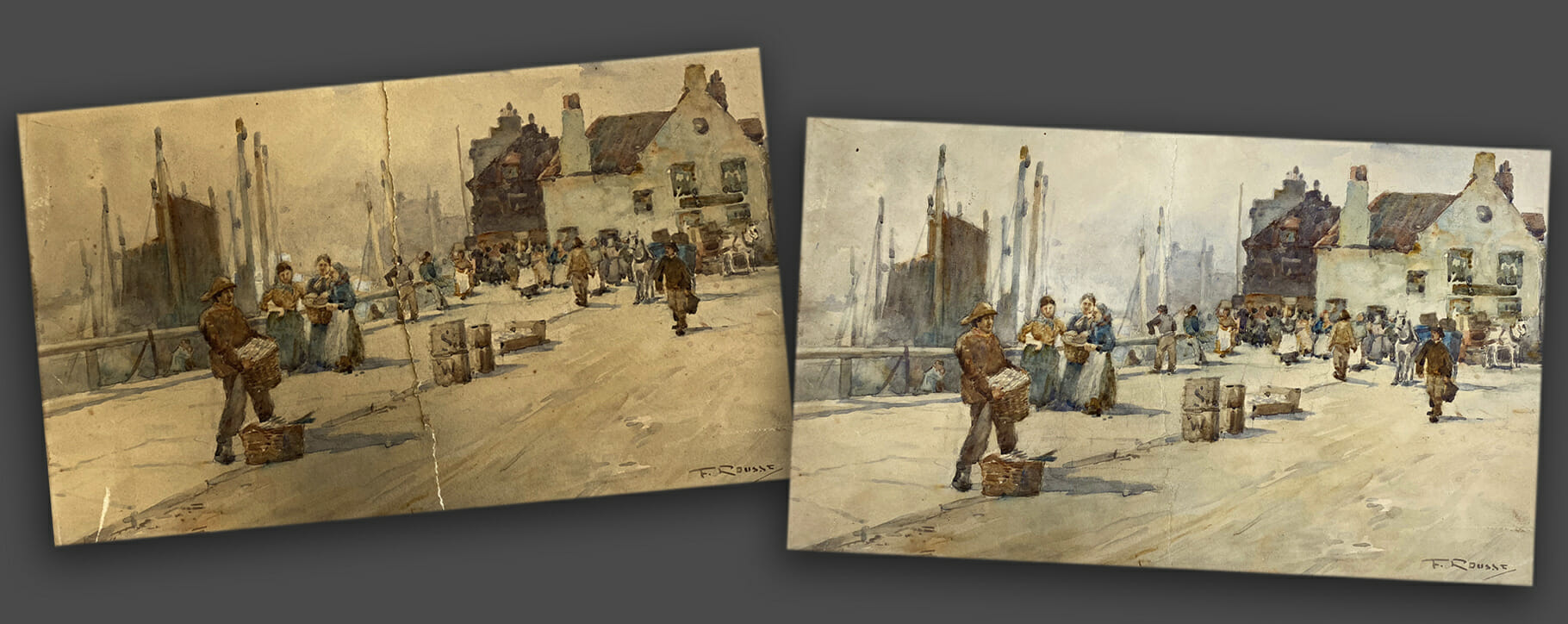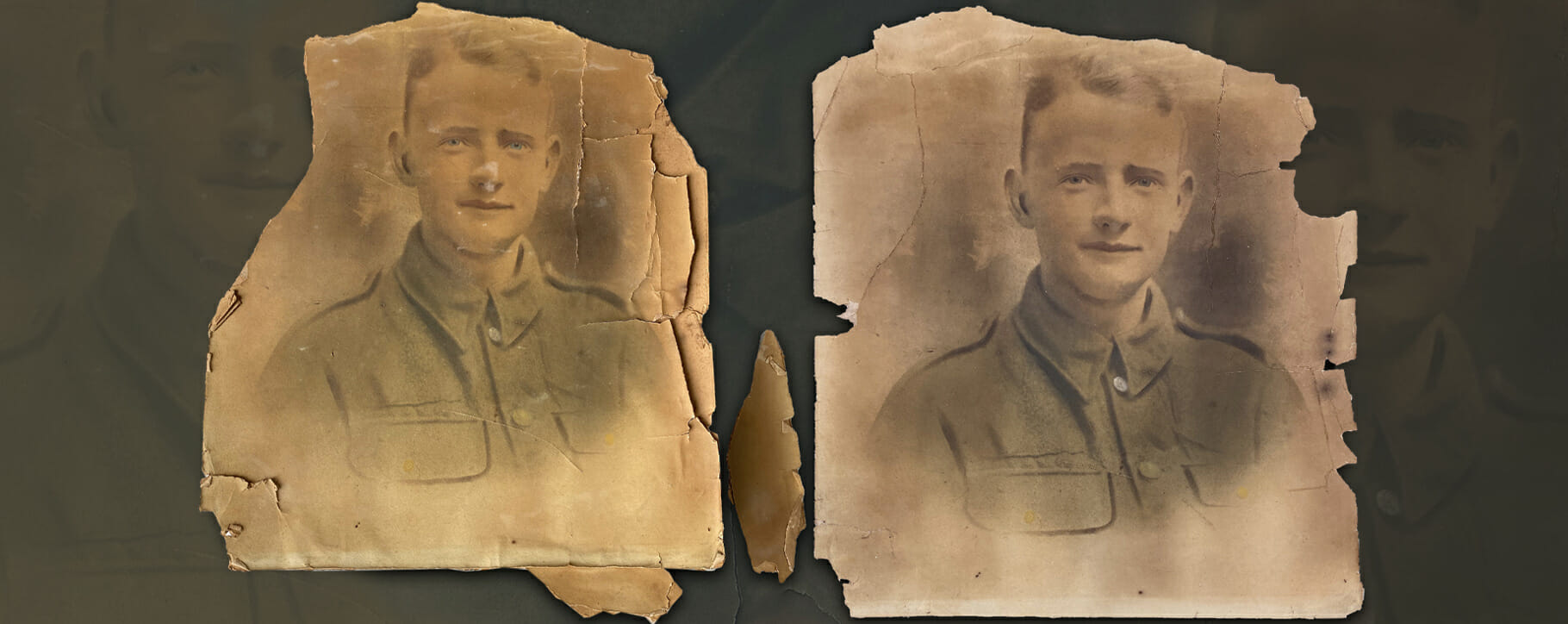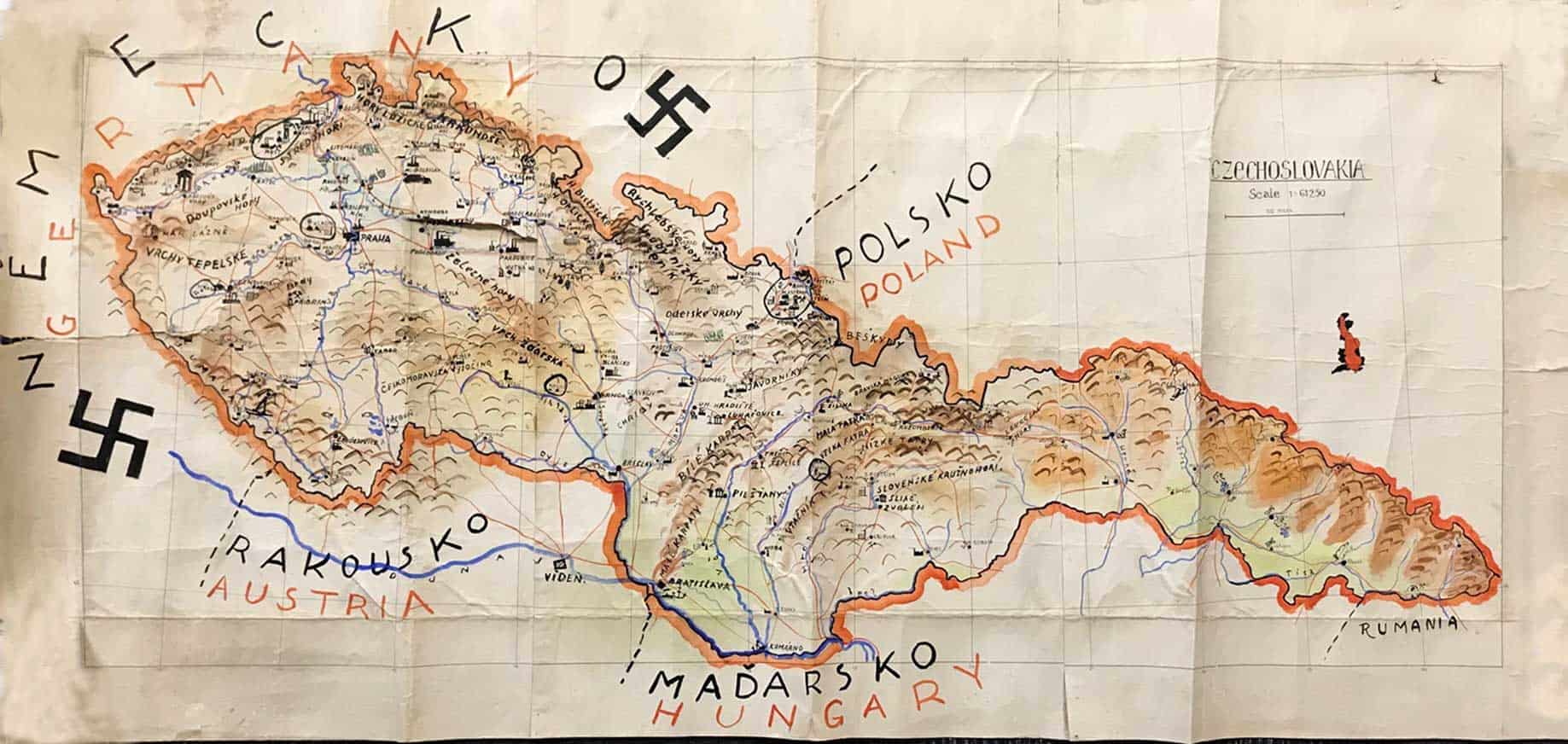It is always a fascinating source of interest for our clients and art collectors to see how we repair watercolours and works-on-paper. It is understandable to assume there is little or nothing that can be done to fix such fragile items. Although these are naturally delicate items, repairs are still possible and very successful. So how do we repair watercolours and works-on-paper that are damaged and ensure a seamless repair?
 Above: a torn print before after after restoration by our ICON accredited conservator
Above: a torn print before after after restoration by our ICON accredited conservator
How are torn watercolours repaired?
As you will know from looking at the numerous case studies and articles on our website, we conduct an assessment for every artwork we receive into the studio. This helps us to understand the current condition of an artwork and the treatment that is required. Unframed works on paper are particularly susceptible to damage due to being unprotected. The fragility of the thin paper can easily be torn if knocked or dropped. If artwork has been rolled up or folded for some time, perhaps if it is a map or certificate, its structure is weakened and it becomes most fragile along the crease lines. This can therefore often lead to tears.
 Above: a torn and yellowed watercolour painting before and after restoration by our paper conservator
Above: a torn and yellowed watercolour painting before and after restoration by our paper conservator
For watercolours with tears, missing paper, punctures or holes, the most common method for repairing is to fill the damaged areas with liquid paper pulp, and subsequently line with Japanese tissue for the most comprehensive structural stability.
The liquid paper pulp will be carefully sized and with the correct weight to fit the exact loss after careful examination. The aim is to integrate this new material carefully with the original fibres to ensure the repair is completely seamless. In the below photograph, repairs are needed for insect damage. Once artwork is fully decontaminated, the repairs can be carried out using the same methods as described above.
 Above: a sentimentally important family portrait which was sensitively restored by our paper conservator
Above: a sentimentally important family portrait which was sensitively restored by our paper conservator
What is it possible to achieve from restoration?
Throughout the process, we speak with our clients about what is possible from restoration and what they want to achieve. For example, if a map has an area missing, how would they now like that area to look like? In such an instance, the authenticity of the map and historical integrity will be an important consideration.
Would they like the missing area to be filled and retouched in one appropriate colour, or would they like the details of the map to be re-created as faithfully as possible? We always work with our clients to advise on what is realistic and what is possible to achieve.
 Above: the map before restoration
Above: the map before restoration
When we recently restored a World War Two map, it was fortunate that there were no large areas of missing paper. The multiple tears were all successfully repaired and the map was lined onto Japanese tissue to provide the most comprehensive support. We also spoke in detail with our clients about what they would like the restoration to achieve. Their aim was a common one shared by many of our clients; to stabilise and conserve while keeping the authenticity and age of the map. A pristine piece would be incompatible with its history.
As you can see, the map was successfully repaired and conserved, while the historical authenticity was retained. You can read more about the restoration of this map in our Case Study.
 Above: the map after restoration
Above: the map after restoration
Will the repair be visible?
As mentioned, the aim of the treatment with liquid paper pulp and lining is for the repairs to be invisible. The application of the new material is very carefully done and integrated with precision to ensure that there is no difference between the original and new material.
Once we have ascertained from our clients what they would like to achieve, and their preference for the repairs, we can retouch the repairs appropriately and in keeping with the style and age of the artwork.
Will the value of the artwork be affected?
Our clients are often concerned about whether the cost of restoration will be more than what the value of the painting is worth or if restoration will affect the value and sale price of the artwork.
Many artworks are likely to have had some form of restoration over time but have still sold well. Whether the value of an artwork will be affected can largely be attributed to the scale of the work required and the quality of the restoration. As long as the restoration treatment does not materially affect and alter the original work, artworks can be restored without decreasing the value of a piece. For high-profile restorations, the publicity can generate huge interest and significantly increase value. To learn more, read our helpful article A Guide To Professional Valuations For Art Collections.
If you have a watercolour or work on paper and would like our advice for restoration, please contact us for our no-obligation advice.

 Above: a torn print before after after restoration by our ICON accredited conservator
Above: a torn print before after after restoration by our ICON accredited conservator Above: a torn and yellowed watercolour painting before and after restoration by our paper conservator
Above: a torn and yellowed watercolour painting before and after restoration by our paper conservator Above: a sentimentally important family portrait which was sensitively restored by our paper conservator
Above: a sentimentally important family portrait which was sensitively restored by our paper conservator Above: the map before restoration
Above: the map before restoration  Above: the map after restoration
Above: the map after restoration




